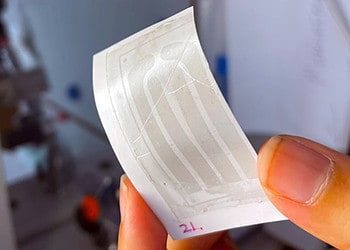Every time a new manufacturing or development technology concerning solar cells was introduced, the futurists and tech pundits were quick to hail the coming of a new generation. The first were the monocrystal silicon cells doped with Phosphorus and Boron in a pn-junction; these are expensive to produce, yet comprise 80% of the total solar panel market. The second generation cells are usually called thin-film solar cells because when compared to crystalline silicon based cells they are made from layers of semiconductor materials only a few micrometers thick. Such cells include amorphous silicon cells, polycristalline silicon or Copper Indium diSelenide (CIS) cells; these cells have a lower efficiency than the 1st generation, yet they compensate by being very cheap. The third generation of solar cells are the most efficient cells. These cells are made from new materials besides silicon, including silicon wires, solar inks using conventional printing press technologies, organic dyes, quantum dots and conductive plastics.
So, when will the fourth generation be upon us? Looking forward, some might imply that the new wave of solar cells might be comprised, among other, by carbon nanotubes. A lot of efforts have been infested into carbon nanotube research in the past decade or so. Concerning solar cells, scientists are particularly interested in these one dimensional nanoscale cylinders made of carbon atoms because they possess some unique properties. Nanotubes have a fantastic tensile strength and an exceptional electron mobility, which makes them ideal for use in solar cells where carrying charge is paramount.

By providing a better charge carrying medium, carbon nanotubes can significantly increase cell efficiency. However, in order to obtain the highest performance for electronic applications, the carbon nanotubes must be assembled into a well-ordered network of interconnecting nanotubes. Manufacturing tech today isn’t the best in this respect, so previous efforts thus far have been unsatisfying.
Scientists at Umeå University in Sweden found a way, however, to engineer these nanotube networks in a manner that is practical. For the first time, the researchers show that carbon nanotubes can be engineered into complex network architectures, and with controlled nano-scale dimensions inside a polymer matrix. The method offers a high degree of control and involves using far less nanotubes compared to other conventional methods, making the process cheaper by reducing material-related costs.
“We have found that the resulting nano networks possess exceptional ability to transport charges, up to 100 million times higher than previously measured carbon nanotube random networks produced by conventional methods,” says Dr David Barbero, leader of the project and assistant professor at the Department of Physics at Umeå University.
The Umea research was published in the journal Advanced Materials. Other important developments in this area include the work of Stanford researchers on an all-carbon solar cell, which promises to dramatically reduce costs if proven efficient. While the present research discusses a polymer solution to building carbon nanotube networks, worth mention are the developments made at University of Illinois where a group there found a way to solder carbon nanotubes together. The method basically allows researchers to arrange carbon nanotubes for use as transistors where they could be embedded into thin sheets of plastic or flat-panel displays, but it could find its uses in solar cells too.






